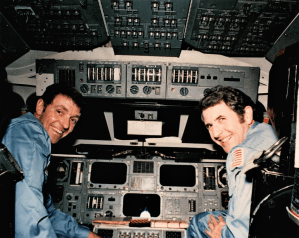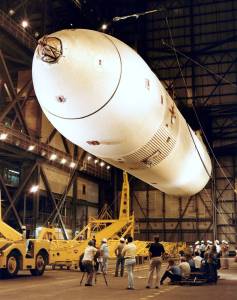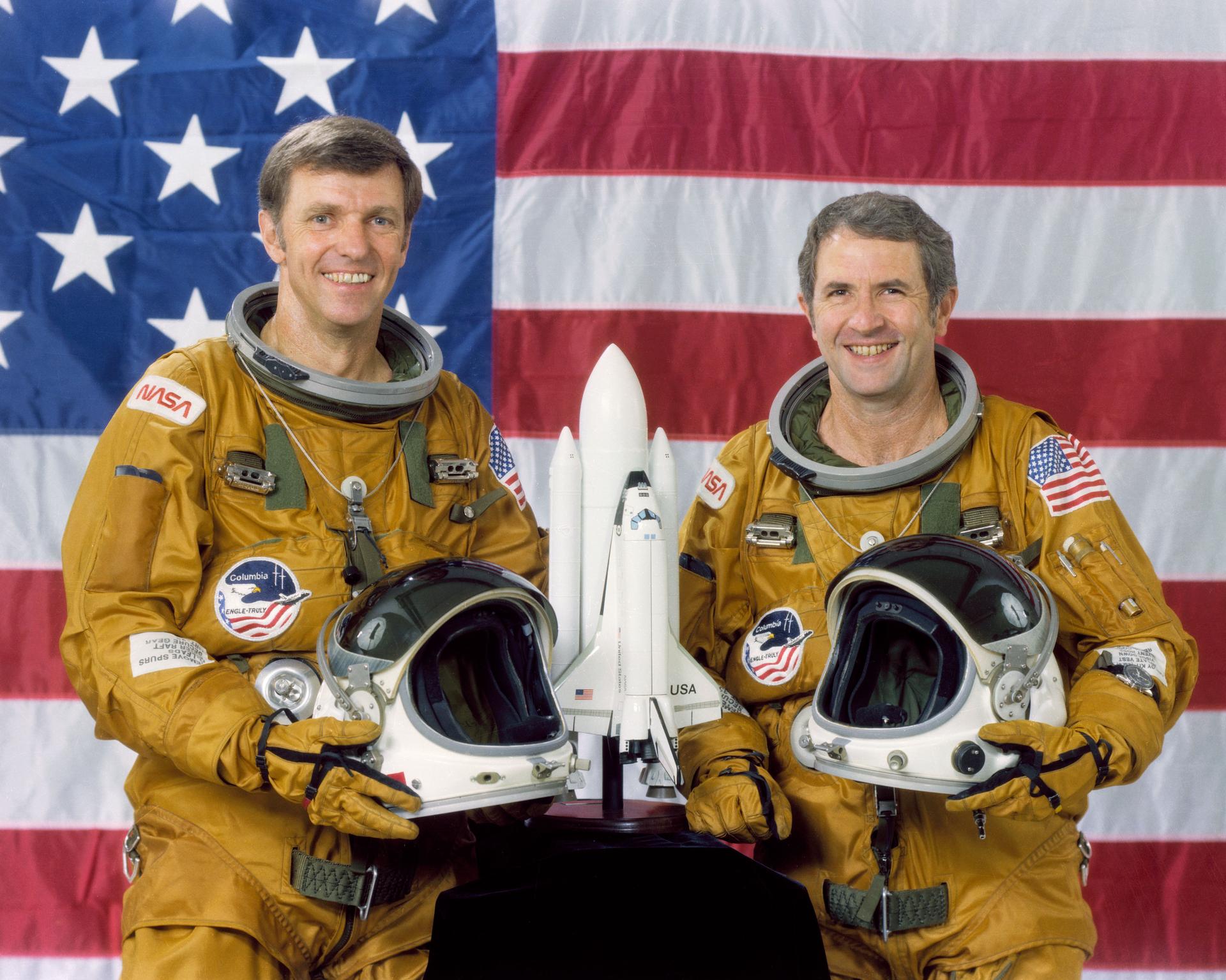By the middle of October 1981, ground crews had completed repairs to Columbia after an oxidizer spill damaged the space shuttle four weeks earlier. Mission managers had reset the launch date of STS-2 to Nov. 4 to allow adequate time for the repairs, consisting of the replacement of about 370 thermal protection tiles, to be completed at Launch Pad 39A at NASA’s Kennedy Space Center (KSC) in Florida. With the additional time, STS-2 astronauts Joe H. Engle and Richard H. Truly spent time in mission simulators to prepare for their planned five-day mission, the first space shuttle flight to carry a scientific payload. The suite of instruments designated OSTA-1, sponsored by NASA’s Office of Space and Terrestrial Applications, was designed for Earth remote sensing.
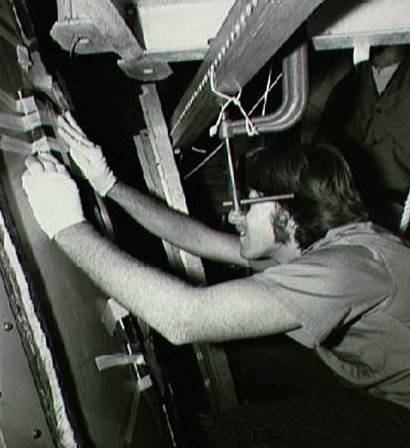
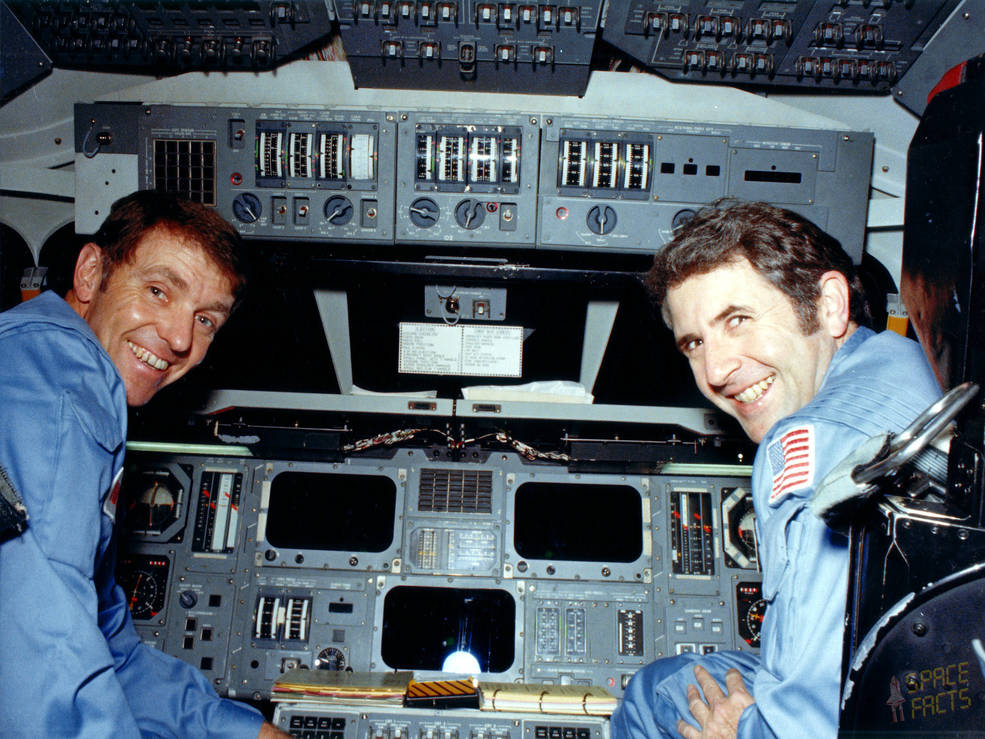
Left: A technician works to replace thermal protection system tiles on space shuttle
Columbia’s nose. Right: STS-2 astronauts Joe H. Engle, left, and Richard H. Truly
in the motion base simulator at NASA’s Johnson Space Center in Houston.
A nitrogen tetroxide oxidizer spill from Columbia’s forward reaction control system thruster pod on Sept. 22, with the shuttle already on Launch Pad 39A, resulted in about 370 thermal protection system tiles either falling off or needing to be replaced. By Oct. 13, the tiles on the orbiter’s nose had been replaced and ground crews reloaded the oxidizer, after filtering it to remove impurities, on Oct. 17. Managers had reset the launch date for Columbia’s return to space from Oct. 9 to Nov. 4 to give ground crews time to complete the repairs. Countdown preparations began on Oct. 23, with the final 73-hour countdown scheduled to begin on Nov. 2. Meanwhile, Engle and Truly continued practicing various parts of their planned five-day mission in simulators at NASA’s Johnson Space Center in Houston.
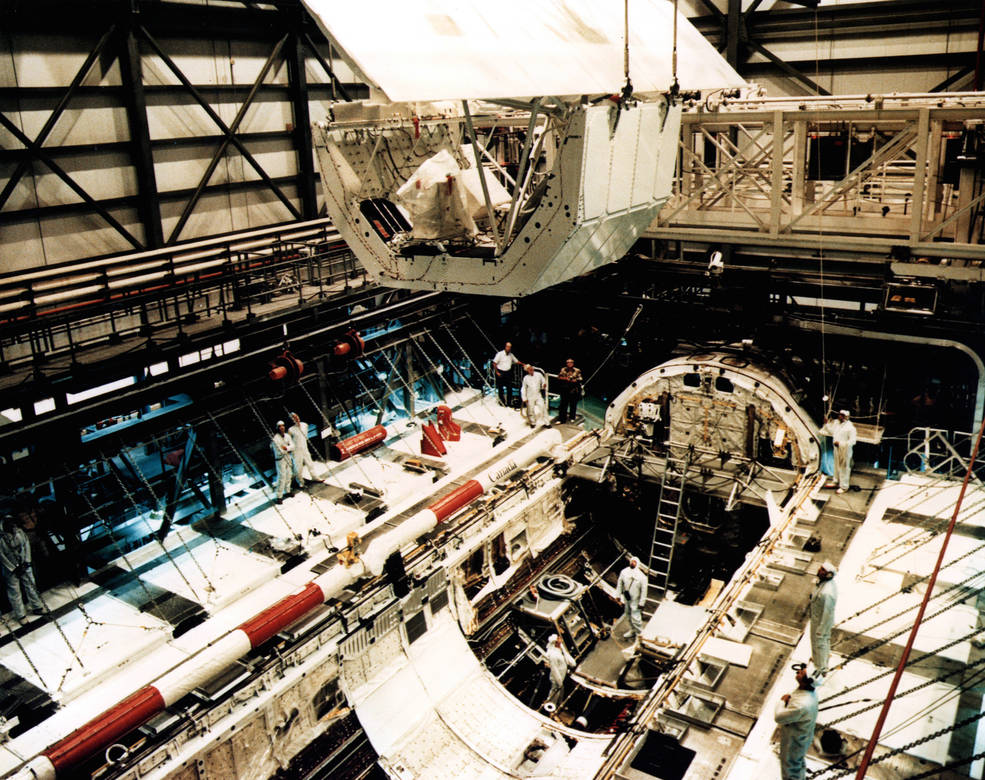
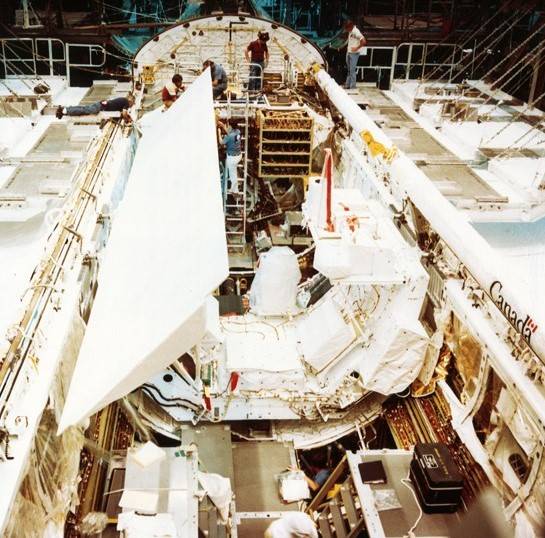
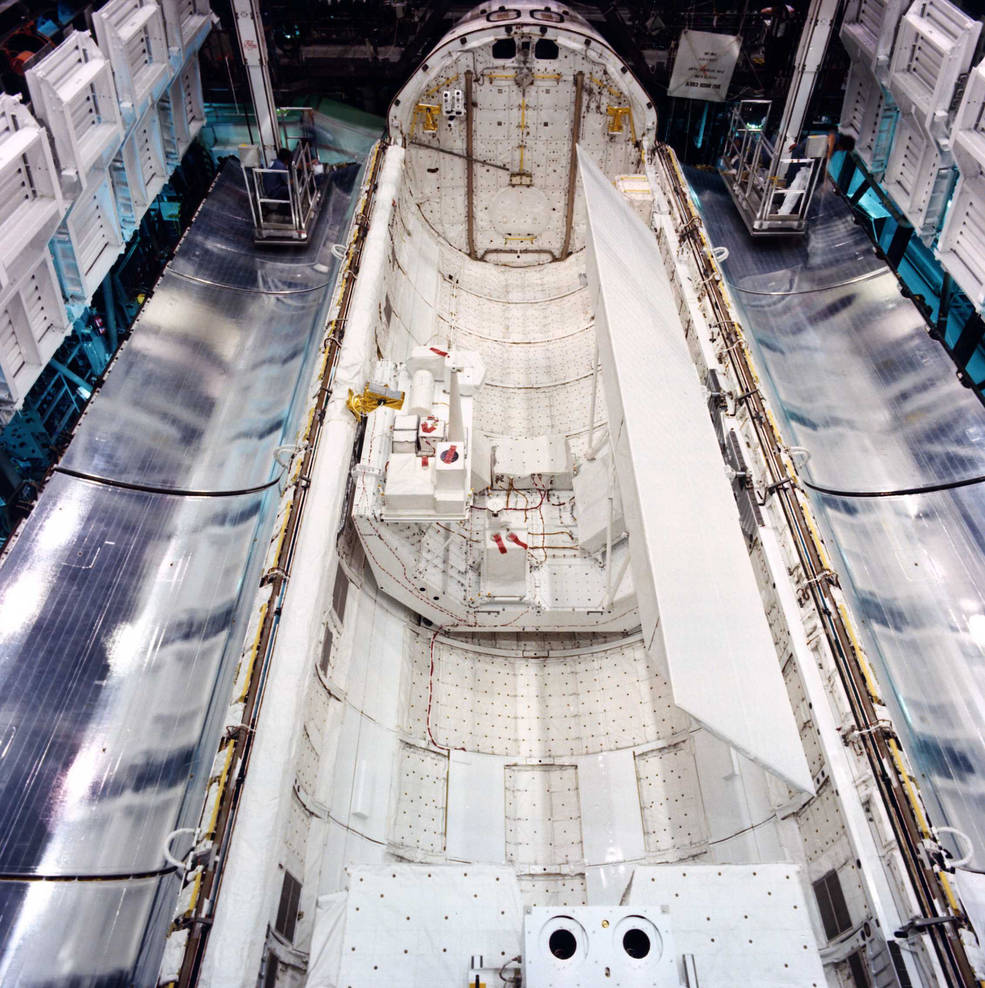
Left: In the Orbiter Processing Facility (OPF) at NASA’s Kennedy Space Center, ground crews load the OSTA-1
pallet into space shuttle Columbia’s payload bay. Middle: Engineers in the OPF Columbia’s payload bay to
prepare the OSTA-1 payload for flight. Right: The OSTA-1 payload in Columbia’s payload bay, shortly
before the payload bay doors were closed in preparation for the orbiter’s rollover
to the Vehicle Assembly Building.
Ground crews in KSC’s Orbiter Processing Facility had installed the OSTA-1 payload into Columbia’s payload bay on June 29, 1981. The OSTA-1 payloads, a suite of seven instruments in the payload bay and the crew compartment designed for remote sensing of the Earth’s atmosphere, oceans, and land resources, consisted of:
(1) the Shuttle Imaging Radar-A (SIR-A), a side-looking synthetic aperture radar to generate maps of terrestrial features;
(2) the Shuttle Multispectral Infrared Radiometer (SMIRR) to test a technique to determine rock type from space-based observations;
(3) the Feature Identification and Location Experiment (FILE) to help develop techniques to make data gathering by Earth resources satellites more efficient;
(4) the Measurement of Air Pollution from Satellites (MAPS), an experiment to measure the amount of carbon monoxide in the middle and upper troposphere (7.5 to 11 miles altitude);
(5) the Ocean Color Experiment (OCE) to detect differences in ocean color that may indicate concentrations of plankton and schools of fish;
(6) the Night/day Optical Survey of Lightning (NOSL), an instrument to observe and record lightning discharges from space; and
(7) the Helfex Bioengineering Test (HBT), a precursor to future Spacelab plant growth experiments.
The first five instruments were mounted on a U-shaped Spacelab pallet, supplied by the European Space Agency, and located in the shuttle’s payload bay. The pallet provided a structural interface, power, command and data handling, and cooling to the experiments. The NOSL and HBT experiments were located in the crew compartment. During its time in orbit, the Shuttle assumed an earth-viewing orientation to accommodate the viewing requirements of the OSTA-1 experiments. In this attitude, called Z-axis local vertical (ZLV), the Shuttle’s payload bay faces the earth on a line perpendicular to the earth’s surface. The OSTA-1 experiments were planned to be activated about 4.5 hours after liftoff. The overall goal of the OSTA-1 experiments during STS-2 was to demonstrate the capability of the space shuttle to conduct scientific research.
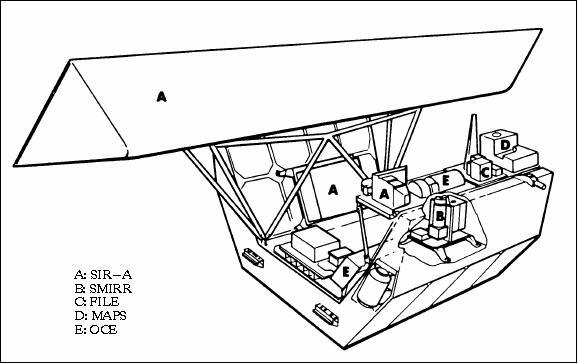
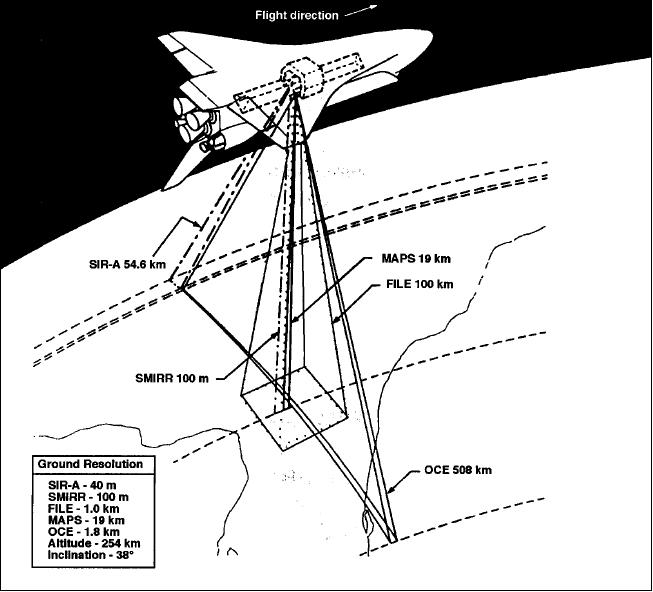
Left: Schematic of the payload bay mounted OSTA-1 experiments, shown installed on the Spacelab pallet. Right: Schematic representation of the ground coverage of the OSTA-1 instruments.





























